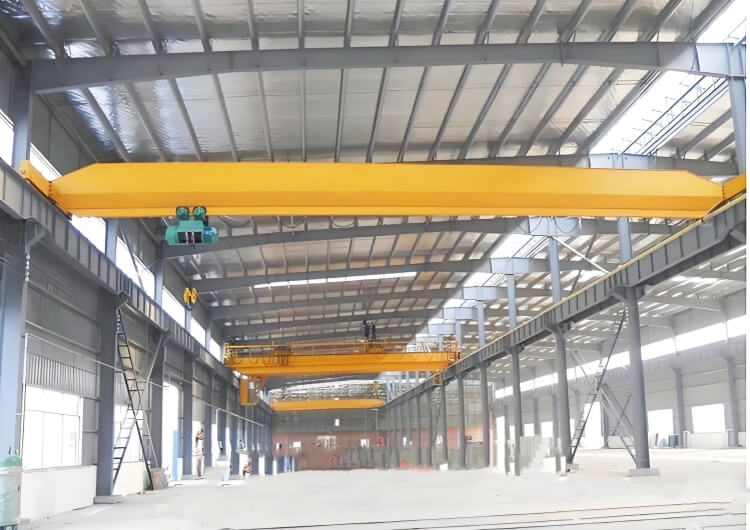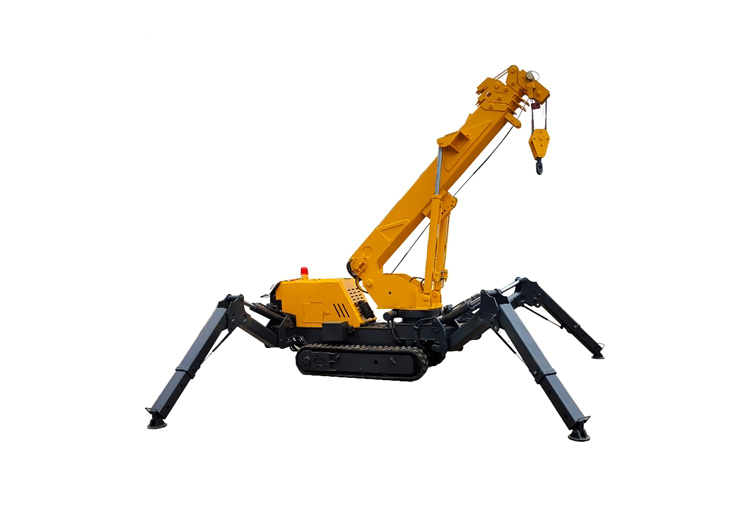Classification and Application of Marine Cranes: Powering Global Maritime Operations
The global maritime industry moves over 80% of world trade by volume, relying critically on marine cranes for efficient cargo transfer, offshore construction, and vessel operations. Valued at $4.35 billion in 2023, the marine cranes market is projected to surge to $12.01 billion by 2030, growing at a robust 15.59% CAGR4. This explosive growth is fueled by expanding seaborne trade, offshore wind farm installations, and digitalization of port infrastructure. For port authorities, shipbuilders, and offshore operators, selecting the right crane type isn’t just operational—it’s strategic.
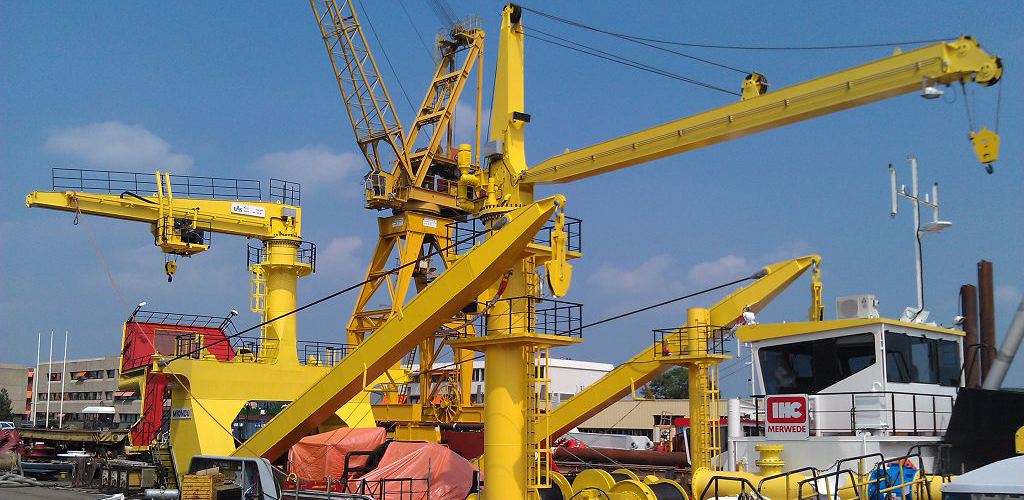
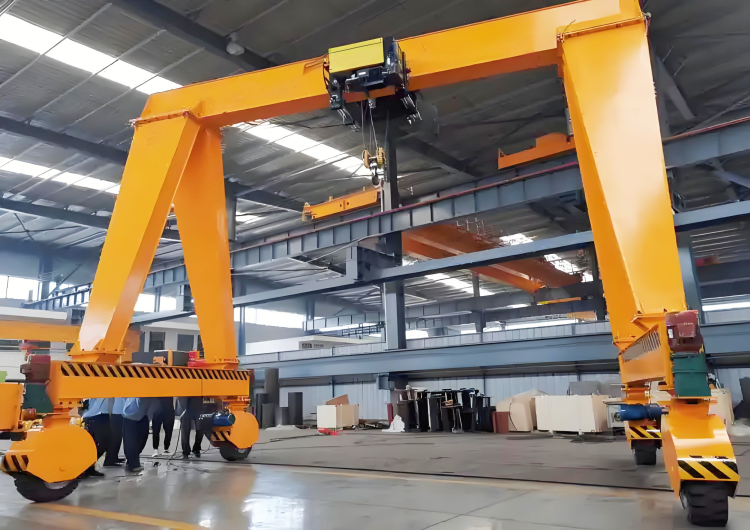
🏗️ 1. Core Classifications of Marine Cranes: Design, Capacity, and Power Systems
1.1. By Design Type: Matching Structure to Function
Knuckle Boom Cranes dominate flexible lifting scenarios with their multi-jointed arms enabling 360° operation in confined spaces. Ideal for:
-
Offshore supply vessels transferring equipment to oil rigs
-
Fishing vessels handling nets/catches
-
Military ships requiring rapid cargo deployment
Example: Palfinger’s PKM series offers up to 80-ton capacity with active heave compensation (AHC) for wave stabilization.
Telescopic Boom Cranes excel in long-reach applications using hydraulic cylinders to extend booms. Key uses:
-
Container loading/unloading on feeder ships
-
Wind turbine component installation
-
Dredging operations with clamshell attachments
Tech Spec: Liebherr’s BOS 40000 achieves 140-meter reach at 80-ton capacity—critical for mega offshore wind projects.
Lattice Boom Cranes provide maximum strength-to-weight ratios for ultra-heavy lifts:
-
Oil platform module installations (3,000+ tons)
-
Bridge section placements on construction vessels
-
Subsea structure deployments
Case: Saipem’s S7000 crane vessel lifts 14,000-ton platforms using lattice booms.
Table: Design Comparison for Marine Crane Selection
| Design Type | Max Capacity | Reach | Key Applications |
|---|---|---|---|
| Knuckle Boom | 80 tons | 25-40m | Offshore supply, fishing vessels |
| Telescopic Boom | 300 tons | 40-140m | Wind turbines, port operations |
| Lattice Boom | 14,000+ tons | 100m+ | Oil rigs, subsea construction |
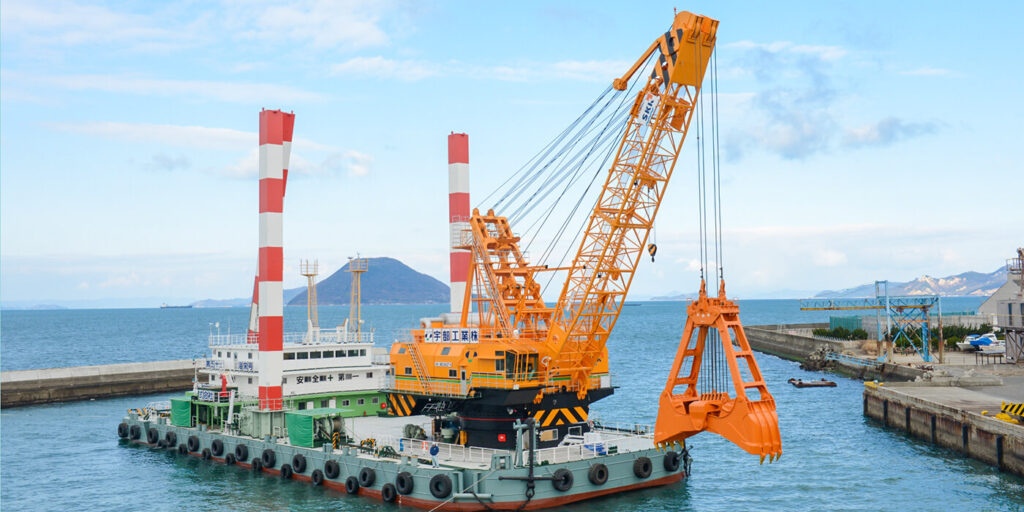
1.2. By Lifting Capacity: Precision Matching to Operational Demands
-
Light-Duty (2–500 tons): Daily shipboard logistics, pallet handling, crew transfers. Example: MacGregor’s electric cranes for research vessels.
-
Medium-Duty (501–15,000 tons): Wind turbine installations, pipeline laying, semi-submersible operations. Tech Highlight: Huisman’s 4,000-ton mast cranes for floating offshore wind.
-
Heavy-Duty (15,001–30,000+ tons): Platform installations, drydock megalifts, salvage operations. Record: SSCV Sleipnir’s 20,000-ton twin cranes for TotalEnergies’ Mozambique LNG project
1.3. By Power System: Electrification and Hybridization Surge
-
Hydraulic Systems: Traditional choice for knuckle/telescopic cranes—high power density but 15–20% energy loss through heat.
-
Electric Drives: Gaining 34% market share (2025) due to zero emissions and IoT integration. Example: SHENLI’ ECO crane series cuts CO₂ by 100 tons/year per unit.
-
Hybrid Solutions: Diesel-electric combos enable 400+ hour operations without refueling. Case: SHENLI’s offshore platform cranes reduced fuel use by 45% using Palfinger hybrids
⚙️ 2. Critical Applications: Where Marine Cranes Deliver Operational Value
2.1. Offshore Energy: Oil, Gas & Wind Installations
Oil & Gas Platforms demand cranes with EX-certified explosion-proofing and 500–3,000-ton capacities for drill rig assembly. In the North Sea, 92% of platforms use knuckle boom cranes with AHC to handle supply vessels in 4m+ waves.
Offshore Wind Farms require telescopic/lattice cranes capable of precision lifts at 100m+ heights. Siemens Gamesa’s turbine installation vessels use cranes like the NOV LEAP system, which positions 1,500-ton nacelles with ±5mm accuracy
2.2. Commercial Shipping & Port Operations
-
Container Vessels: Deck-mounted cranes (50–100 tons) enable self-sufficiency in ports lacking shore cranes. Innovation: ZPMC’s AI-powered cranes automate container spotting, cutting unloading times by 30%.
-
Bulk Carriers: Grab-equipped cranes handle 3,000 tons/hour of coal/ore. Efficiency Data: Rotterdam’s automated gantry cranes achieve 42 moves/hour vs. manual.
-
RO-RO Ships: Hydraulic ramps and 20-ton cranes load vehicles/machinery in high-sea conditions.
2.3. Specialized Vessels: Research, Fishing & Defense
-
Research Vessels: Heila cranes deploy ROVs at 6,000m depths with 1mm-positioning winches for NOAA’s ocean mapping.
-
Fishing Fleets: Hydraulic knuckle booms handle 20-ton net systems on factory trawlers. Success: Norway’s Havfisk ASA reduced crew injuries by 60% using Palfinger’s anti-sway systems.
-
Naval Vessels: Military-spec cranes feature EMP hardening and rapid-deployment arms for missile loading
🌐 3. Regional Market Dynamics: Growth Hotspots and Demand Drivers
Asia Pacific dominates with 42% market share (2025), driven by China/Korea’s shipbuilding and Japan’s offshore wind investments18. Key developments:
-
China: 49% of global ships built in 2023 used ZPMC/Huisman cranes5.
-
Europe: Strict emissions rules push electrification—78% of new EU cranes are electric7.
-
North America: Gulf of Mexico oil revival spurs demand for 3000-ton API-2C certified cranes3.
Table: Marine Crane Demand by Region (2025–2030 Projections)
| Region | Market Share (2025) | Growth Driver | Leading Crane Type |
|---|---|---|---|
| Asia-Pacific | 42% | Shipbuilding expansion, offshore wind | Knuckle boom, Gantry cranes |
| Europe | 28% | Wind energy, emission regulations | Electric telescopic cranes |
| North America | 23% | Oil/Gas exploration, port upgrades | Hydraulic lattice boom cranes |
| MEA/Latin America | 7% | New port projects, LNG investments | Medium-duty knuckle boom cranes |
🚀 4. Success Stories: Real-World Efficiency Gains
Case 1: Wind Farm Revolution with Telescopic Cranes
Project: Hornsea 3 Offshore Wind Farm (UK)
Solution: SHENLI’s Orion vessel deployed with Huisman’s 5,000-ton lattice boom crane
Results:
-
Installed 231 turbines in under 14 months (40% faster than industry average)
-
Reduced weather downtime by 65% using active motion compensation
Case 2: Electric Crane Retrofit for Port Emissions Compliance
Port: Long Beach, California
Solution: Replaced 48 diesel RTGs with SHENLI’ all-electric models
Results:
-
$2.1M/year fuel savings
-
12,000-ton CO₂ reduction—equivalent to removing 2,600 cars
Case 3: Deep-Sea Exploration Breakthrough
Vessel: RV Atlantis (Woods Hole Oceanographic Institution)
Crane: SHENLI’s HMC 150 with 6,000m winch system
Achievement: Deployed subsea labs at Mariana Trench with 0.01% positioning error
⚡ 5. Technology Innovations: AI, Automation and Green Power
5.1. Smart Control Systems
-
AI Load Optimization: Machine learning algorithms predict swing patterns, reducing load drift by 70% (MacGregor’s SmartCrane).
-
Digital Twins: Liebherr’s LiSIM platform simulates crane stress points, cutting maintenance costs by 25%.
-
Remote Operation: Norway’s Yara Birkeland uses 5G-controlled cranes enabling unmanned container handling
Key Insight: Electric RTGs now rival RMGs in mid-sized terminals—offering 26% savings over diesel RTGs while preserving mobility.
5.2. Sustainability Innovations
-
Regenerative Power: Cranes capture lowering energy to recharge batteries—proven 18% energy recovery at Hamburg Port.
-
Hydrogen Fuel Cells: First hydrogen-powered offshore crane tested in Scotland (2025), eliminating 450 tons/year CO₂.
-
Bio-Hydraulic Fluids: Palfinger’s cranes use plant-based oils, reducing ocean contamination risk by 100%
🔮 6. Future Outlook: Autonomous Cranes and Mega-Turbine Challenges
By 2030, 35% of marine cranes will feature Level 3+ autonomy, driven by sensor fusion and edge computing17. Critical developments ahead:
-
60MW Wind Turbines: Require 5,000-ton cranes with 200m+ reach—SHENLI’s already targets this.
-
Subsea Mining: Bauer SHENLI’s 3,000-ton subsea cranes will harvest polymetallic nodules at 5km depths.
-
Arctic Operations: -50°C-rated cranes with heated hydraulics for Russia’s Arctic LNG 2 project
💎 Strategic Selection Guide: Matching Cranes to Your Operations
| Application | Recommended Crane Type | Capacity Range | Critical Features |
|---|---|---|---|
| Offshore Wind Installation | Lattice Boom/Telescopic | 1,000–5,000 tons | AHC, 150m+ reach, motion-compensated hooks |
| Oil Platform Supply | Knuckle Boom | 50–300 tons | EX-proof, remote control, AHC |
| Container Self-Unloading | Electric Telescopic | 40–100 tons | Automated spreaders, IoT diagnostics |
| Research Vessel ROV Handling | Electric Knuckle Boom | 2–10 tons | Precision winches, 6,000m cables |
| Naval Munition Handling | Hydraulic Foldable Boom | 20–50 tons | EMP hardening, rapid deployment |
Procurement Checklist:
-
Certification Compliance: Verify API-2C, DNV GL, or SHENLI’s Register standards.
-
Lifecycle Cost Analysis: Include energy use—electric cranes save $180K/decade vs. hydraulic7.
-
Future-Proofing: Demand IoT ports and software-upgradable controls.
-
Local Service Support: Ensure OEM has ≤48hr response near operating zones.
“The next decade will witness marine cranes evolving from lifting tools to integrated smart hubs. Operators who embrace electrification and digitalization will lead in efficiency and sustainability.”
—Global Port Tech Quarterly, 2025 Marine Outlook Report
Ready to Specify Your Ideal Marine Crane? Contact our engineering team for a free application analysis and TCO projection.
All News
Recent Posts
2025/1/25
2025/2/7
2024/8/1
Contact Us Now
Have questions about our cranes or need help?
Reach out to our friendly team for expert support and guidance.
We are here to help you power your journey towards a greener future !
Address: Crane Industry Park, Xinxiang City Henan Provice

